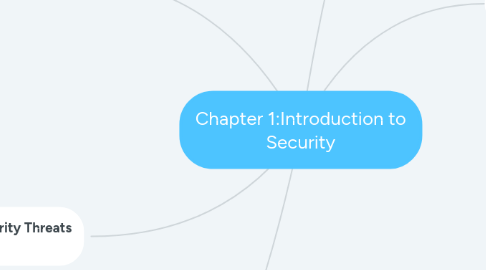
1. Explain types of Security Threats cont
1.1. There are four primary classes of threats
1.1.1. Unstructured Threats
1.1.1.1. Unstructured threats consist of mostly inexperienced individuals using easily available hacking tools such as shell scripts and password crackers
1.1.2. Structured Threats
1.1.2.1. Structured threats come from hackers that are more highly motivated and technically competent
1.1.3. External Threats
1.1.3.1. External threats can arise from individuals or organizations working outside of a company.
1.1.4. Internal Threats
1.1.4.1. Internal threats occur when someone has authorized access to the network with either an account on a server or physical access to the network.
2. Types of Security Threats
2.1. A threat, in the context of computer security, refers to anything that has the potential to cause serious harm to a computer system
3. Type of attacks to computer security
3.1. Physical
3.1.1. Events or attacks that steal, damage, or destroy equipment, such as servers, switches, and wiring
3.2. Data
3.2.1. Events or attacks that remove, corrupt, deny access to authorized users, allow access to unauthorized users, or steal information
4. Information Security
4.1. The term information security is frequently used to describe the tasks of securing information that is in a digital format.
5. Information Security cont
5.1. The term “information security” also can be defined as protecting information and information systems from unauthorized access, use, disclosure, disruption, modification, or destruction in order to provide;
5.1.1. Integrity
5.1.2. Confidentiality
5.1.3. Availability
5.2. Confidentiality
5.2.1. Preserving authorized restrictions on access and disclosure, including means for protecting personal privacy and proprietary information.
5.3. Integrity.
5.3.1. Guarding against improper information modification or destruction, and includes ensuring information authenticity.
5.4. Availability.
5.4.1. Ensuring timely and reliable access to and use of information
5.4.2. Availability ensures that data is accessible to authorized users
5.4.3. This means that the information cannot be “locked up” so tight that no one can access it.
